SUMMARY
This is AI generated summarization, which may have errors. For context, always refer to the full article.
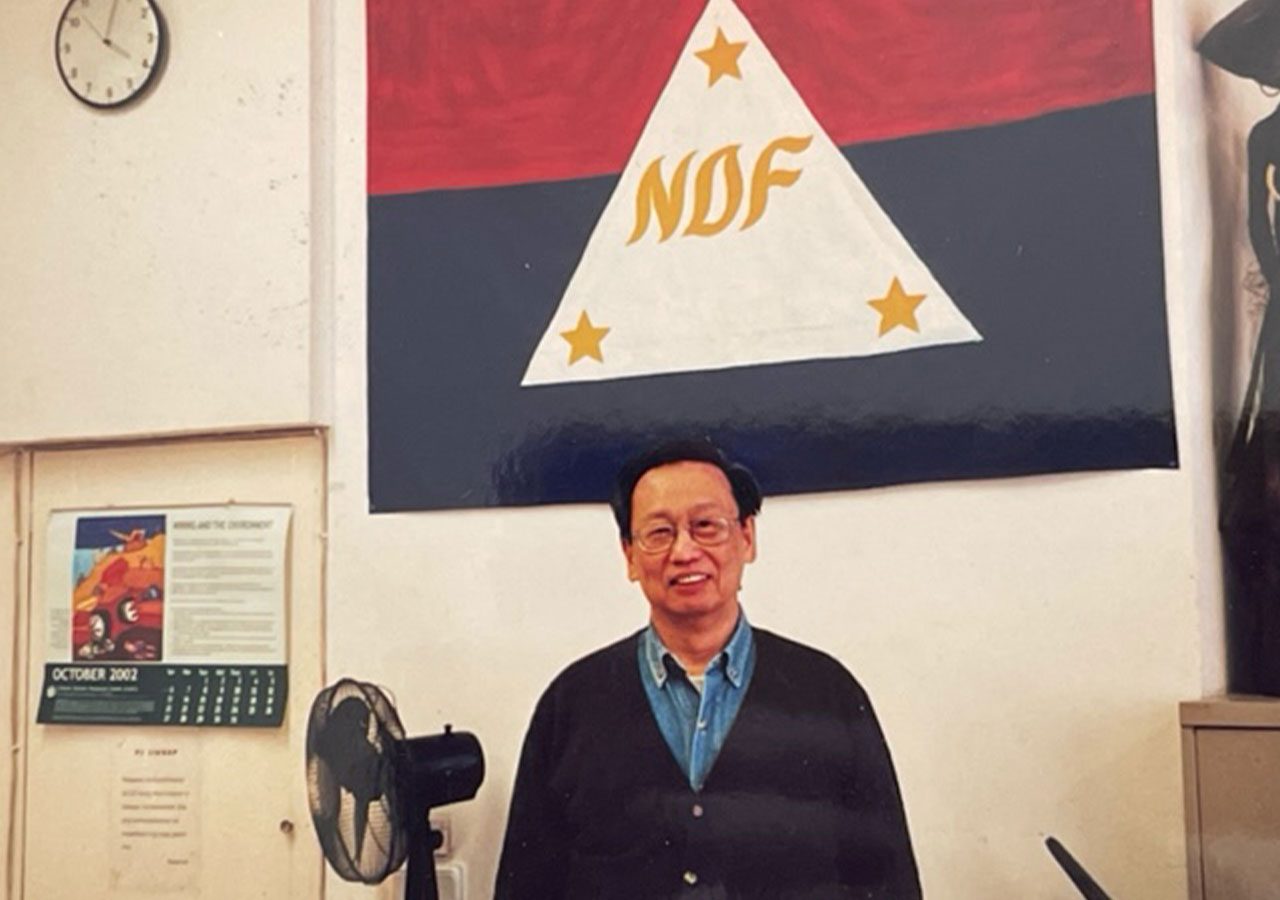
MANILA, Philippines – Newsbreak magazine interviewed Jose Maria Sison over two decades ago – on October 19, 2002 – in his office in Utrecht. Sison died on Friday, December 16, 2022 (Manila time). We are republishing the story from that interview – where he spoke about the terrorist tag on him, the prospects of peace, and where the world was headed.
If he’s in big trouble nowadays, Jose Maria Sison doesn’t show it.
At 63, he’s 10 pounds heavier than he was last year (he quit smoking, that’s why) and still finds the time to sing his blues away on his own karaoke at home. He gets a high from situations like this – playing the underdog, networking with people, and assembling survival kits after his host, the Dutch government, declared him a terrorist and stripped him of social welfare benefits.
“I have friends,” Sison told Newsbreak in a four-hour interview on October 19, 2002 at the office of the National Democratic Front (NDF) in Utrecht, Netherlands, just an eight-minute walk from the central train station. “I will not starve.”
The Dutch Ministry of Finance recently restored his benefits on humanitarian grounds, but Sison refuses to accept them because he has already filed a civil rights case in court to question his host’s earlier move. Pending a verdict, “I shall have to borrow the money for personal necessities, rent, and insurance from friends.”
Rubbing salt on the wound, the European Union (EU) also recently declared him a terrorist. Indeed, the world seems to be closing in on the founder of Asia’s longest-running insurgency. From the time he set foot as an exile here in 1987, Europe and the rest of the world have changed.
And so has he, in some ways. Sison now tinkers with the computer, a skill he admits learning only a year ago. That somehow liberates him from his well-known dependence on his wife, Julie, who for many years would patiently write down his winding thoughts – from calling comrades to arms to ditching the Philippine government’s latest policy.
And for all his swashbuckling, Sison concedes that the best choice he has for the moment is to stay here, in a country that has already thrice rejected his plea for political asylum and where he, in his words, is “just a tolerated alien.”
Sudden or slow death?
Sooner or later, he may be thrown out. In that case, where would he go?
Because he had been denied asylum by his own host country, he just can’t seek refuge in another. Going by the general rules on political refugees, it is likely that his bid would still be thrown back to the Dutch government.
In his trademark table-banging gesture, Sison admits: “Talagang masama na ang kalagayan mo kung ang choices mo eh Amerika o Pilipinas (You’re really in a bad situation when your choices are only America and the Philippines).” The Dutch government’s move freezing his tiny bank account and cutting off his benefits came a day after the US listed the New People’s Army (NPA) on its terror list on August 12, 2002. The NPA is the armed wing of the Communist Party of the Philippines (CPP), which Sison founded in 1968.
Sison suspects that the “bilateral strategic objective” of Manila and Washington is for him to be extradited to the US and face charges there. “Maximum detention ka sa US,” he says. “Masama ‘yon…putang ina. (You’ll get maximum detention in the US. That’s bad…son of a bitch.) At my age, another round of 10 years and by the time I get out I’d be 73. That’s practically a death sentence.”
His own country isn’t much of a choice, either. “In the US slow death, sa (in the ) Pilipinas sudden death. If I accept the government’s offers, I would be dead politically. All that I stood for in so many decades, ibebenta ko (I’d sell out)? But if I don’t get a [government] position, they will kill me – unless I join the armed struggle and take my chances there.”
Well, why not? That’s the gripe of some of his comrades, anyway, that he’s safely ensconced here, away from the rough life in the battlefield.
“That looks heroic…. Apolinario Mabini was a paralytic…. I might have to lose some pounds,” Sison says, laughing. Turning serious, he clarifies: “I’m not saying it’s unthinkable – that could be the best possible choice, but if the government knows that they will not let me live for a week.”
These are the unappetizing scenarios Sison has to ponder. But for now, he can buy time. In the middle of October 2002, the conservative Dutch coalition government that declared him a terrorist collapsed. That gives him temporary relief, because a caretaker government wouldn’t dare invite political noise by expelling him at this point. Elections will most likely be held early next year.
Bad timing
The Dutch government’s fall occurred almost at the same time that Foreign Affairs Secretary Blas Ople began his trip to Europe in 2002 to convince the EU to declare Sison a terrorist, deny him safe haven, and cut off funding for groups associated with him. The Ople team visited Germany, Sweden, Denmark, Spain, and Belgium. (Editor’s note: Ople died in 2003)
But bombs ripped Bali that week, making the trip seem badly timed. As the entire world grappled with a new war, here was the Philippine mission warning European leaders about the threat posed by an aging exiled leader of a bickering Philippine communist movement.
This, while a Dutch TV station showed a 23-minute documentary favorable to Sison, which included soundbites from no less than Vice President Teofisto Guingona Jr. declaring that the NPA is not a terrorist organization.
Trust Sison to make hay of such opportunities. During the same week, he sent his two sidekicks – Luis Jalandoni and Fidel Agcaoili – to London and Sweden, respectively, to drum up support for his cause. (Editor’s note: Agcaoili died in 2020.)
The trio, all veterans in the communist underground, are fighting what could be their one last fight, ironically not in their homeland but in a continent where the communist wall has long fallen, former state-run economies are now waltzing with globalization, and conservatives are winning elections.
The rise of the Right in some states plus the emerging “anti-immigrant” sentiment in Europe hasn’t escaped Sison. Now he calls his host government, “uto-uto ng Amerika (America’s errand boy).” For in truth, there’s no love lost between him and his host for 15 years.
Noisy exile
His comrades say Sison didn’t intend to live in exile here. In late 1986, after his release from prison, he left Manila for a lecture tour of Asia and Europe. But he was relentless in his attacks against the government of Corazon Aquino, prompting her to cancel his passport while he was in the Netherlands.
But retired general Jose Almonte, former national security adviser and a founding member of the rebel military movement that plotted the 1986 coup against Ferdinand Marcos, tells Newsbreak that he was with Sison in Singapore in late 1986 when the latter asked him to convey a message to Ms. Aquino.
“He asked me to tell Cory – as a matter of courtesy because she was the one who released him – that he was not returning to the Philippines and that he would lead the revolution from abroad,” Almonte recalls. He, Sison, and two others were invited guests of the Singaporean government to talk about the 1986 Edsa revolt. “I told Cory about Joma’s message, but I honestly don’t remember how she reacted then,” Almonte adds.
By 1987, when Sison had reached Europe, the central committee of the CPP issued a resolution declaring he could re-assume the chairmanship of the party, as long as he returned to the Philippines. Sison didn’t, and this decision later spawned resentment among some senior cadres who felt he was needed more back home than in the already-crowded international solidarity group in Europe.
Two choices
Sison’s comrades here gave him two choices then: he could seek political asylum or apply as a visiting scholar with a university. With the latter, he could acquire residency in due time.
Sison chose an asylum bid, but didn’t do what others like him were expected to do – keep quiet while his case was being heard.
In 1988, the Dutch government refused Sison’s first application for asylum, but old-timers here say that was a pro forma refusal. By tradition, the Dutch government refuses first requests for asylum. However, the exiled leader also made it difficult for his host to accept him; he continued to make political noise and lead the communist movement from afar. Three years later, he applied for asylum again, and again it was rejected.
For the third time in 1997, the Dutch government rejected his plea. But this decision had a twist, according to Carlo Butalid, a former NDF official who resides here but who’s now estranged from Sison. “The Dutch government made such a big case,” Butalid told Newsbreak in an interview. “It said that Sison had personal links with known terrorist organizations.” Citing this, the Dutch government recommended his immediate expulsion.
What probably didn’t help Sison was the NDF’s decision in 1991 to send a delegation to Iraq, at the height of the latter’s war with Kuwait.
Sison appealed his case, and won temporary relief. A Dutch court ruled that while the government had every right to reject his asylum bid, they couldn’t throw him out because as a political refugee under the Geneva Convention, Sison enjoyed protection from any danger facing him should he be remanded to the Philippines.
So even before the US listing, Sison was already in a legal limbo here.
He is a recognized political refugee, under international humanitarian laws, but is not an accepted one by the host government. “Ang gulo nila (They’re chaotic),” he rues. His daughter Aurea and son Jasm who are living here are naturalized Dutch citizens, but citizenship cannot be transferred to parents. (His two other daughters are living in China.)
To ensure his stay here, Sison could invoke the right of a political refugee to remain with his family, which the Dutch government and international laws uphold.
The other way he could get out of this mess is through political means. And the reason Sison is able to stay is, ironically, the NDF’s on-again, off-again peace talks with the Philippine government which – if his critics are to be believed – he has never really taken seriously and has been using only for tactical gains.
A visit to his campaign website shows a consistent line of argument in support of his stay here. The defend-Sison line goes like this: He sits on the peace panel with the government, so how can he be regarded as a terrorist? In 1998, the Philippine government declared there were no pending charges against him (again, to facilitate the talks), so what charges can the government concoct now against him? Norway and Belgium, EU members, have fully supported the peace talks, so why should the Philippine government now ask the EU to declare him a terrorist? And would the Netherlands risk offending Norway, host of the stalled talks, by expelling him?
Butalid puts it bluntly, “Joma is sincere about having peace talks because this is what keeps him politically relevant in the Philippines and also prevents the Dutch government from throwing him out.” Officially, Sison sits on the NDF peace panel as consultant.
President Arroyo’s operators are exploiting this for their own tactical benefit. They surmise that by cornering him with a terror tag, the NDF will be forced to return to the negotiating table. Sison sees through this himself: “The plan is, threaten me and probably push the NDF panel in the direction of capitulation.”
It was the Dutch government that requested the EU Council, through the committee of government representatives, to declare him a terrorist. On October 28, the EU included Sison and the NPA on its list of groups and persons with links to terrorists.
Yet even with an EU terror tag, he could still insist on staying here by invoking international laws, filing human rights cases, and going to the European Court of Human Rights to protest. Next month, Sison will appeal the EU listing next month before the European Court of Justice in Luxembourg.
US card
But what would give Sison little room for maneuver is the US extradition treaty with the Netherlands. The Philippines could not extradite him because it has no treaty with the Netherlands.
The US, he stresses, has its own “unilateral objective” of catching him and doesn’t care much about the peace talks. “I have talked to the best available lawyer here and they say extradition can overpower all prohibitions against expulsion.” The US apparently intends to use Sison’s statements against American troops in the Philippines as one of the bases for a case against him. “To circumvent the European law against the death penalty, the US can guarantee that the extraditee will not be executed in the US,” Sison explains.
Many in the Left, including Sison’s biggest critics, question the government’s all-out campaign against him. The best option is still peace talks, they say, because the hardliners in the movement have supposedly stopped listening to their exiled chief anyway. Sison is government’s best chance at a negotiated settlement of the long drawn-out conflict, they say.
Presidential Spokesperson Rigoberto Tiglao has dropped hints government would open talks with local communist leaders led by CPP chair Benito Tiamzon, who is a known hardliner.
Tiglao has said he’d want to sit down with Tiamzon and wife Wilma, also a veteran in the communist underground. To which Sison retorts: “He [Tiglao] is bluffing…the Tiamzons might vomit on his face if he can go near them.”
Yet, there are persistent reports of a rift between Sison and the Tiamzons over strategy and tactics, and that’s probably the reason Tiglao wants to seduce the couple. “That’s military intrigue,” Sison says, refusing to elaborate.
He has reason to beat his breast. The NPA is recovering from a huge setback, and this Sison attributes to the back-to-basics campaign he launched a decade ago which caused the biggest split in the CPP since its birth in 1968.
Mass work
In the early 1990s, Sison repeatedly ordered the NPA to scale down the fighting in the countryside.
“I would call that a 10-year itch,” he says of the debate between hardline Maoists like him and cadres who wanted to deviate from the protracted people’s war strategy. He says: “Kapag na-develop mo na ang puwersa, nagmamadali kang manalo. Sabi nila noon, tapos na daw ang period of mass work and it was time to emphasize military action (When you’ve gained sufficient armed strength, you tend to be impatient. They said the period of mass work was over and it was time to focus on military action).”
“The moment you start to think that way, oras na nagpabaya ka sa political work, patay ka (once you become negligent on political work, you’re dead),” he adds.
Sison likens the stage of the NPA now to what it was in 1979, at the height of the Marcos dictatorship. “The difference now is they have more firearms, but what was preponderant in 1979 was the widening and deepening of the mass base for extensive and intensive guerrilla warfare.”
Today, the NDF has struck a formal alliance with the Moro Islamic Liberation Front, according to Sison. It’s a partnership that he says has strategic goals. “Time will come…walang pinagkaiba ang MILF sa CPP (the MILF will be no different from the CPP) even in seeking separation. The CPP is also separatist in a way, it separates itself from the existing system.”
Compared to the Moro National Liberation Front (MNLF), the MILF is easier to deal with, Sison says, “siguro dahil taga-Central Mindanao sila, sanay makipag-ugnay sa mga (perhaps because they are from Central Mindanao, they are used to dealing with) non-Muslim, unlike the MNLF who are more insular, having come from island provinces.”
Lifetime war
He’s convinced communism is not dead but that it would be foolhardy for him to set a timetable for victory.
The fighting can take forever, he says, and cadres must be “ready for the long haul but also for a surprise that might occur.” Setting deadlines is useless, he admits, because “on a global scale you have just seen a big change.”
And how about the bloody purge conducted by the CPP in its ranks in the mid-’80s? “That’s something regrettable,” says Sison. “But I should not regret it personally [because] I was not around…. I was not informed.” As he spoke, Jose “Pepe” Luneta, who was also at the NDF office during the interview, listened quietly. A known ally of Sison, Luneta, former chair of the CPP Southern Luzon Commission and member of the political bureau, has been tagged as one of those who ordered and directly took part in the bloody purge that claimed the lives of many young, innocent communist cadres. But that’s another story. (Editor’s note: Luneta died in 2018.)
Despite the disadvantages of being away, Sison chooses to live here because, he insists, he feels safer here than in the Philippines where he can be killed by the military “or they [military] can say it was those who [broke away from the CPP] who did it maski militar din ang gagawa (even if it was the military that did it).”
It was in 1998 when Sison seriously considered returning to the Philippines. Speaker Jose de Venecia Jr., who was running for president then, almost succeeded in getting Sison to sign an interim peace pact before a throng at the Luneta grandstand. But the hawks managed to “sabotage” this, Sison says.
“I was already issued a Philippine passport,” he recalls. “I accepted it on condition that all political prisoners would be released…pinag-usapan pa that I will handpick ang mga kababayan at kamag-anakan and there was a discussion that I will handpick the countrymen and relatives [for the elections]).”
He dared to think of returning home at the time because “those in power wouldn’t want me harmed…otherwise, patay sila politically (they would be politically dead).”
Like all ideologues, Sison loves this kind of talk.
But nearly 40 years after he joined the revolution, the diehard Maoist is caught in a 21st century battle: a battle for his personal survival, in a country that doesn’t want him a minute longer, and in a region that has shunned the politics that he still clings to.
To get through this, the only weapon and theater Sison needs so far are his computer and the internet, tools of the modern world that he is using to fight an old war.
His struggling comrades back home must either be green with envy or blind to the irony.
Depending, of course, on which of the squabbling communist factions they belong to. – Rappler.com
This story was first published in the November 2002 issue of Newsbreak magazine.
Add a comment
How does this make you feel?
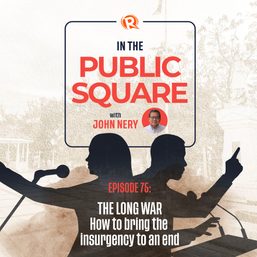

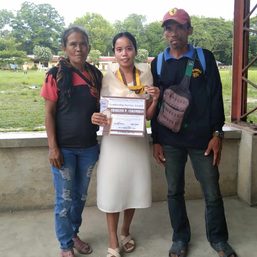
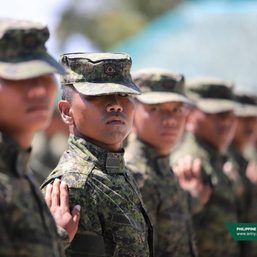


![[OPINION] Was Joma Sison a great man?](https://www.rappler.com/tachyon/2023/01/tl-joma-sison.jpg?resize=257%2C257&crop_strategy=attention)
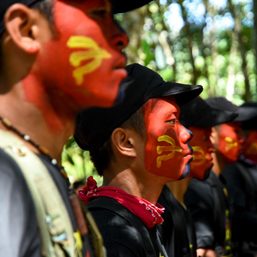
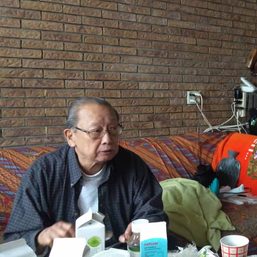
![[The Slingshot] Joma and Duterte: The greatest mutual flattery in Filipino history](https://www.rappler.com/tachyon/2022/12/sison-duterte-december-20-2022.jpg?resize=257%2C257&crop=207px%2C0px%2C900px%2C900px)
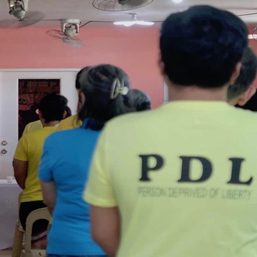
![[OPINION] The CPP-NPA’s 3rd Rectification Movement is bad news to the peace process](https://www.rappler.com/tachyon/2024/01/tl-cpp-npa-peace-talk-rectification.jpg?resize=257%2C257&crop=366px%2C0px%2C1080px%2C1080px)
![[WATCH] In the Public Square with John Nery: 10 years of peace, recommitting to the Bangsamoro peace process](https://www.rappler.com/tachyon/2024/01/Episode-62-In-the-Public-Square-LS.jpg?resize=257%2C257&crop=395px%2C0px%2C1080px%2C1080px)
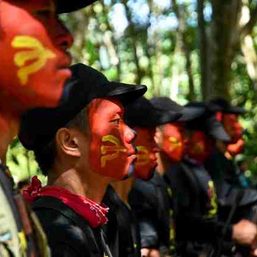
![[Edgewise] Satan denies role in peace talks resumption](https://www.rappler.com/tachyon/2023/12/tl-satan-peace-talks.jpg?resize=257%2C257&crop=318px%2C0px%2C720px%2C720px)
There are no comments yet. Add your comment to start the conversation.